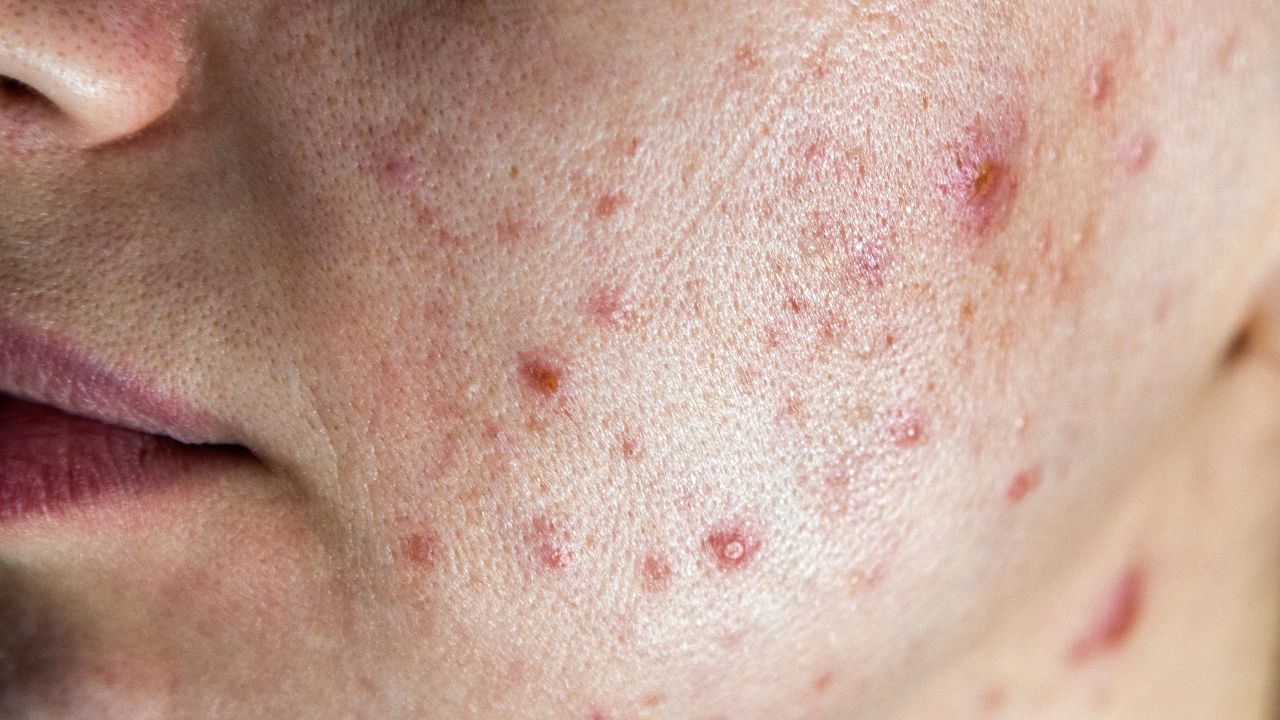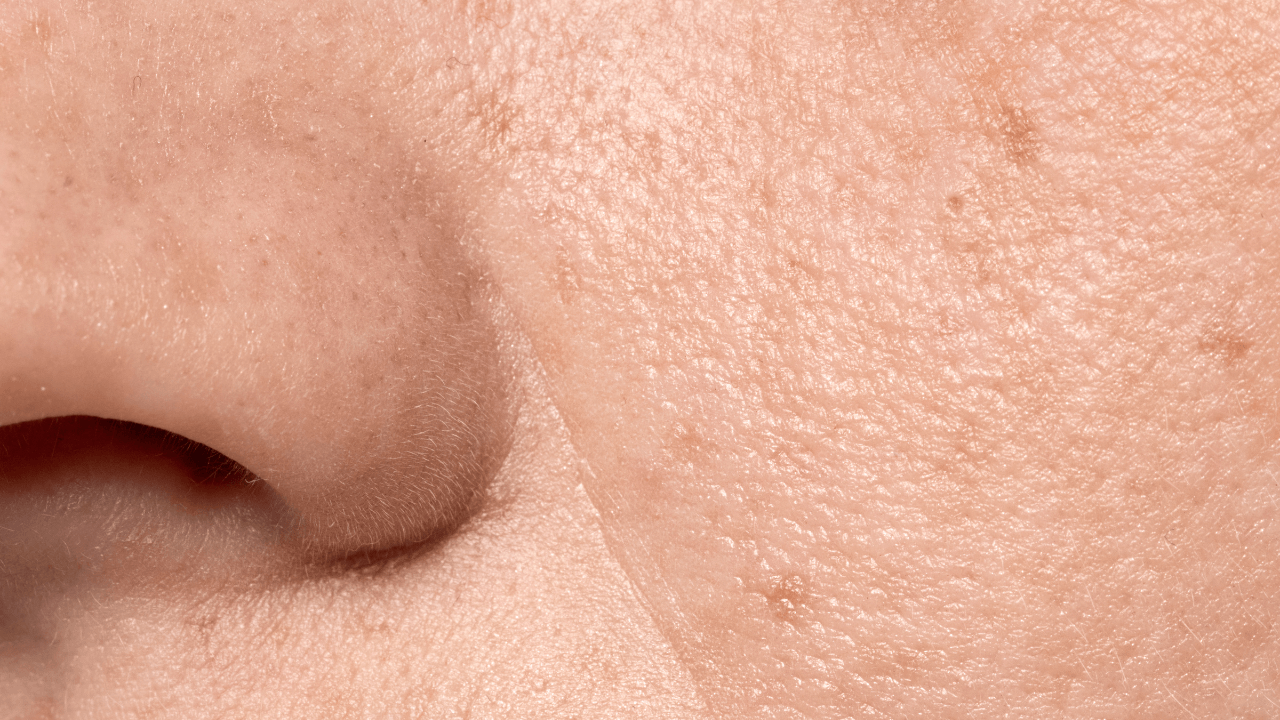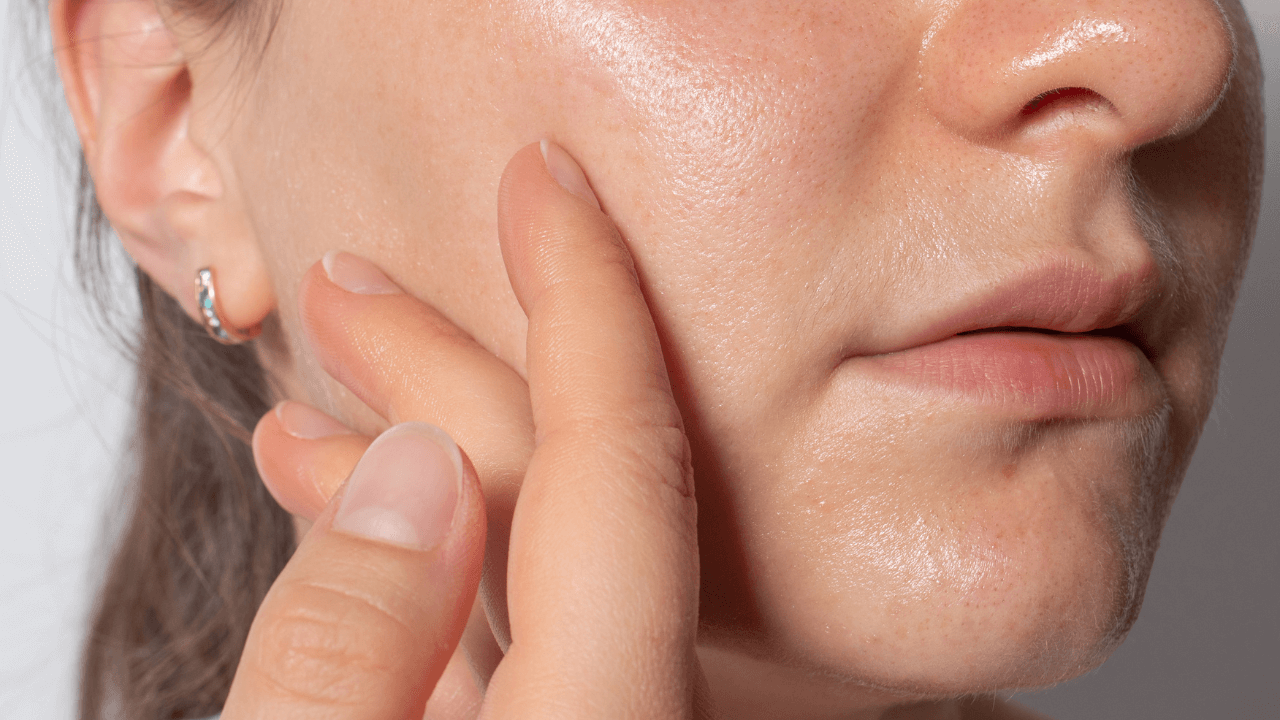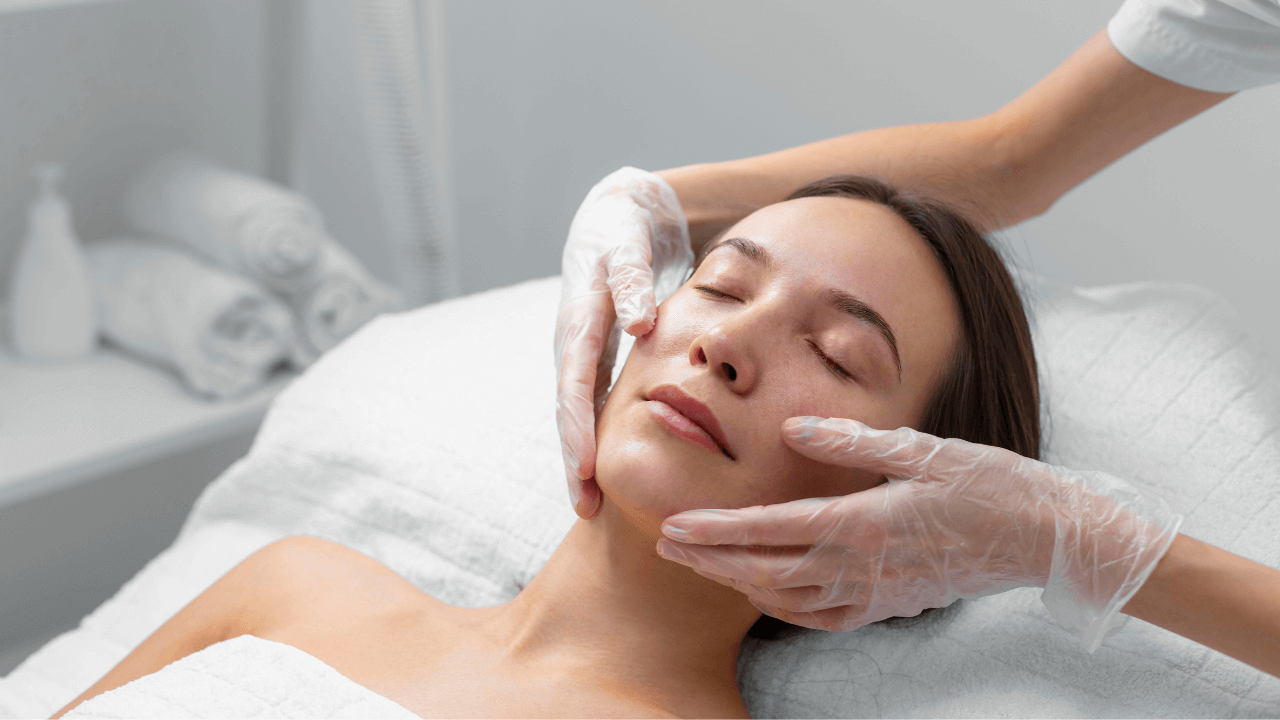Acne breakouts affect nearly 85% of people between the ages of 12 and 24, making it one of the most common skin conditions worldwide. However, acne doesn't discriminate by age—adult acne is increasingly prevalent, affecting up to 15% of women and 3% of men over 25. Understanding the root causes, types, and effective treatments for acne breakouts is essential for achieving clear, healthy skin and maintaining confidence at any age.
What Are Acne Breakouts? Understanding the Basics
Acne breakouts occur when hair follicles become clogged with oil (sebum), dead skin cells, and bacteria. This process can create various types of blemishes, ranging from mild blackheads to severe cystic acne. While often associated with adolescence, acne can persist into adulthood or even begin later in life due to hormonal changes, stress, and environmental factors.
The Acne Formation Process
Step 1: Excess sebum production clogs hair follicles. Step 2: Dead skin cells accumulate and mix with sebum, a type of oil. Step 3: Bacteria (particularly Cutibacterium acnes) multiply in the clogged pore. Step 4: Inflammation occurs, creating visible acne lesions
Types of Acne: Identifying Your Breakout Pattern
Non-Inflammatory Acne
Blackheads (Open Comedones): Small, dark spots caused by clogged pores that remain open to the surface. The dark color comes from oxidized sebum and dead skin cells, not dirt.
Whiteheads (Closed Comedones): Small, flesh-colored or white bumps that occur when clogged pores are closed at the surface.
Inflammatory Acne
Papules: Small, red, tender bumps without visible pus. These develop when clogged pores become inflamed.
Pustules: Red bumps with white or yellow pus-filled centers. Often called "pimples," these are inflamed and infected comedones.
Nodules: Large, hard, painful lumps deep under the skin. These severe lesions can last for weeks or months.
Cysts: Deep, pus-filled lesions that are larger than pustules. Cystic acne is the most severe form and often leads to scarring.
Root Causes of Acne Breakouts
Hormonal Factors
Androgens, including testosterone, increase sebum production, which contributes to clogged pores. This explains why acne often begins during puberty and can flare during menstrual cycles.
Hormonal Fluctuations: Pregnancy, menopause, PCOS (Polycystic Ovary Syndrome), and hormonal birth control can all trigger acne breakouts.
Insulin Resistance: High insulin levels can increase androgen production and inflammation, contributing to the development of acne.
Genetic Predisposition
If both parents had acne, you're more likely to develop severe acne. Genetic influence:
-
Sebum production levels
-
Skin cell turnover rate
-
Inflammatory response
-
Hormone sensitivity
Lifestyle and Environmental Factors
Diet: High-glycemic foods, dairy products, and foods rich in saturated fats may worsen acne in some individuals.
Stress: Chronic stress increases cortisol production, which can worsen existing acne and trigger new breakouts.
Skincare Products: Heavy, comedogenic (pore-clogging) products can contribute to the formation of acne. of acne
Environmental Pollution: Air pollution and humidity can clog pores, leading to increased inflammation.
Acne Triggers: What Makes Breakouts Worse
Common Acne Triggers
Over-Cleansing: Washing your face too frequently or using harsh scrubs can irritate skin and increase oil production.
Hair Products: Pomades, gels, and oils can migrate to facial skin and clog pores, especially along the hairline.
Face Touching: Frequently touching your face transfers bacteria and oils from your hands to your skin, potentially leading to skin irritations.
Tight Clothing or Equipment: Helmets, tight collars, and sports equipment can cause "acne mechanica" through friction and trapped sweat.
Certain Medications: Corticosteroids, lithium, and some vitamins can trigger acne breakouts.
Menstrual Cycle and Acne
Many women experience hormonal acne that follows a predictable pattern:
-
Weeks 1-2: Clearer skin due to lower hormone levels
-
Week 3: Increased oil production as progesterone rises
-
Week 4: Breakouts peak just before menstruation
Acne Myths vs. Facts
Debunking Common Misconceptions
Myth: "Acne is caused by poor hygiene." Over-washing can worsen acne by irritating the skin and increasing oil production.
Myth: "Chocolate and greasy foods cause acne." Fact: While diet may play a role for some people, there's no direct causation between specific foods and acne for most individuals.
Myth: "Acne will go away on its own." Fact: Without proper treatment, acne can persist for years and potentially cause permanent scarring.
Myth: "Popping pimples helps them heal faster." Fact: Picking at acne can worsen inflammation, cause scarring, and spread bacteria to surrounding areas.
Myth: "Tanning clears up acne." Fact: While sun exposure may temporarily dry out acne, UV damage ultimately worsens skin health and can exacerbate the appearance of acne scars.
Professional Acne Treatments
Topical Treatments
Retinoids: The gold standard for acne treatment, including tretinoin, adapalene, and tazarotene. These vitamin A derivatives:
-
Prevent clogged pores
-
Reduce inflammation
-
Promote cell turnover
-
Help with acne scarring
Benzoyl Peroxide: An antimicrobial agent that kills acne bacteria and helps prevent new breakouts. Available in concentrations from 2.5% to 10%.
Salicylic Acid: A beta-hydroxy acid (BHA) that exfoliates inside pores, making it particularly effective for blackheads and whiteheads.
Topical Antibiotics: Clindamycin and erythromycin help reduce inflammation and bacterial growth. Often combined with other treatments.
Azelaic Acid: Provides antibacterial and anti-inflammatory benefits while being gentler than other acids.
Oral Treatments
Antibiotics, such as doxycycline and minocycline, as well as other antibiotics, reduce inflammation and bacterial growth in moderate to severe acne.
Hormonal Therapies: Birth control pills, spironolactone, and anti-androgen medications can be effective for hormonal acne in women.
Isotretinoin (Accutane): Reserved for severe, treatment-resistant acne. This potent medication can provide long-term remission but requires careful monitoring.
Professional Procedures
Chemical Peels: Glycolic acid, salicylic acid, and TCA peels can improve acne and reduce scarring.
Extractions: Professional removal of blackheads and whiteheads by trained aestheticians or dermatologists.
Light and Laser Therapy: Blue light therapy, IPL, and laser treatments can reduce acne bacteria and inflammation.
Cortisone Injections: For large, painful cysts, cortisone injections can quickly reduce inflammation and shrink the cyst.
Building an Effective Acne Skincare Routine
Morning Routine for Acne-Prone Skin
-
Gentle Cleanser: Use a mild, non-comedogenic cleanser to remove overnight buildup without over-drying
-
Treatment Product: Apply prescribed topical medication or over-the-counter treatment
-
Moisturizer: Choose an oil-free, non-comedogenic moisturizer to maintain the skin barrier
-
Sunscreen: Use broad-spectrum SPF 30+ daily—many acne treatments increase sun sensitivity
Evening Routine for Acne-Prone Skin
-
Double Cleansing: Remove makeup and sunscreen with micellar water or cleansing oil, followed by regular cleanser
-
Treatment Application: Apply retinoids, benzoyl peroxide, or prescribed medications as directed
-
Spot Treatment: Target individual blemishes with specialized treatments
-
Moisturizer: Apply a lightweight, non-comedogenic night moisturizer
Weekly Treatments
-
Exfoliation: Use salicylic acid or gentle physical exfoliation 1-2 times per week
-
Clay Masks: Apply once weekly to absorb excess oil and deep-clean pores
-
Hydrating Masks: Balance oil control with hydration to prevent over-drying
Over-the-Counter Acne Treatments
Key Ingredients to Look For
Salicylic Acid (0.5-2%): Best for blackheads and whiteheads
-
Unclogs pores from within
-
Reduces inflammation
-
Gentle enough for daily use
Benzoyl Peroxide (2.5-10%): Effective against inflammatory acne
-
Kills acne bacteria
-
Prevents new breakouts
-
Can cause dryness and bleaching
Niacinamide (3-10%): Gentle option for sensitive skin
-
Reduces oil production
-
Minimizes inflammation
-
Improves skin barrier function
Adapalene (0.1%): Over-the-counter retinoid
-
Available without prescription
-
Prevents clogged pores
-
Reduces inflammation
Product Recommendations by Acne Type
For Blackheads: Salicylic acid cleansers and serums. For Whiteheads: Gentle retinoids and BHA treatment.For Inflammatory Acne: Benzoyl peroxide and niacinamide.For Sensitive Skin: Azelaic acid and gentle formulations
Lifestyle Modifications for Clearer Skin
Diet and Acne
Foods That May Help:
-
Omega-3 rich foods (salmon, walnuts, flaxseeds)
-
Antioxidant-rich fruits and vegetables
-
Low-glycemic foods (whole grains, legumes)
-
Zinc-rich foods (pumpkin seeds, chickpeas)
Foods to Limit:
-
High-glycemic foods (white bread, sugary snacks)
-
Dairy products (especially skim milk)
-
Processed foods are high in saturated fats
-
Excessive sugar and refined carbohydrates
Stress Management
Effective Stress-Reduction Techniques:
-
Regular exercise (shower immediately after to prevent pore-clogging)
-
Meditation and mindfulness practices
-
Adequate sleep (7-9 hours nightly)
-
Time management to reduce daily stress
Sleep and Skin Health
Sleep Hygiene for Acne Prevention:
-
Change pillowcases 2-3 times per week
-
Use silk or satin pillowcases to reduce friction
-
Avoid sleeping on your stomach or side to minimize face contact
-
Keep hair away from your face while sleeping
Hormonal Acne: Special Considerations
Identifying Hormonal Acne
Location: Typically appears along the jawline, chin, and lower cheeks. Timing: Flares are typically predictable about menstrual cycles. Appearance: Often consists of deep, painful cysts. Age of Onset: Can begin in the 20s, 30s, or even 40s
Treatment Approaches
Medical Options:
-
Spironolactone to block androgen receptors
-
Hormonal birth control regulates hormones
-
Metformin for insulin resistance-related acne
Natural Approaches:
-
Spearmint tea to potentially reduce androgens
-
Omega-3 supplements for anti-inflammatory effects
-
Zinc supplementation under medical supervision
Acne Scarring: Prevention and Treatment
Types of Acne Scars
Ice Pick Scars: Deep, narrow scars resembling small holes. Rolling Scars: Broad depressions with sloped edges. Boxcar Scars: Wide, rectangular depressions with sharp edges. Hypertrophic Scars: Raised, thick scars above skin level
Scar Prevention Strategies
-
Never pick or squeeze acne lesions
-
Treat active acne promptly and effectively
-
Use sunscreen to prevent darkening of scars
-
Apply gentle treatments consistently
Professional Scar Treatments
Microneedling: Stimulates collagen production to improve scar texture. Chemical Peels: Resurface skin and reduce shallow scarring. Laser Therapy: Various lasers target different types of scars. Dermal Fillers: Temporarily plump depressed scars. Surgical Procedures: For severe scarring, subcision or punch excisions
When to See a Dermatologist
Signs You Need Professional Help
-
Over-the-counter treatments haven't improved acne after 6-8 weeks
-
Acne is causing emotional distress or affecting self-esteem
-
Deep, painful cysts or nodules are present
-
Acne is leaving scars or dark spots
-
Adult-onset acne appears suddenly
-
Acne covers large areas of the face, chest, or back
What to Expect During Your Visit
Medical History: Discussion of symptoms, triggers, and previous treatments. Physical Examination: Assessment of acne type, severity, and scarring. Treatment Plan: A customized approach based on your specific needs.eds Follow-Up: Regular monitoring to adjust the therapy as needed
Acne in Different Life Stages
Teenage Acne
Characteristics: Often affects the T-zone, typically triggered by hormonal changes associated with puberty. Treatment Focus: A gentle, consistent routine with over-the-counter (OTC) products initially. Your education: Proper skincare habits and realistic expectations
Adult Acne
Characteristics: More likely to be hormonal, affecting the lower face.Treatment Considerations: May require hormonal therapies. Lifestyle Factors: Stress management and work-life balance are crucial
Pregnancy and Acne
Safe Treatments: Azelaic acid, certain antibiotics, and LED light therapy. Avoid: Retinoids, high-dose salicylic acid, specific oral medications. Professional Guidance: Essential for safe treatment options
The Emotional Impact of Acne
Psychological Effects
Acne can significantly impact mental health, causing:
-
Decreased self-confidence
-
Social anxiety and withdrawal
-
Depression in severe cases
-
Body dysmorphic concerns
Coping Strategies
Building Confidence:
-
Focus on overall health and well-being
-
Practice self-compassion and patience
-
Seek support from friends, family, or professionals
-
Remember that acne is temporary and treatable
Professional Support:
-
Dermatologists for medical treatment
-
Therapists for emotional support
-
Support groups for shared experiences
Emerging Acne Treatments and Research
New Treatment Approaches
Microbiome Research: Understanding the role of skin bacteria in acne development. Novel Topical Treatments: Improved delivery systems and combination therapies. Photodynamic Therapy: Light-activated treatments for resistant acne. Probiotic Skincare: Products designed to balance the skin microbiome
Future Directions
Research continues into:
-
Personalized acne treatments based on genetics
-
Novel anti-inflammatory approaches
-
Improved hormonal therapies
-
Prevention strategies for acne-prone individuals
Cost Considerations and Insurance Coverage
Treatment Costs
Over-the-Counter: $10-50 per month for basic routine, Ne Prescription Topicals: $30-200 per month (varies with insurance), Oral Medications: $20-300 per month, depending on medication, Professional Procedures: $ 100- 500+ per session
Insurance Coverage
Most insurance plans cover:
-
Dermatologist consultations for medical acne
-
Prescription medications deemed medically necessary
-
Some may cover isotretinoin with prior authorization
Building Long-Term Success
Realistic Expectations
Timeline for Improvement: Most treatments require 6-12 weeks to show significant results. Maintenance: Acne management is often a long-term commitment. Patience: Skin may initially worsen before improving with some treatments
Consistency is Key
Daily Routine: Stick to your prescribed regimen even when skin looks clear. Regular Follow-Ups: Work with your dermatologist to adjust treatments as needed. Lifestyle Integration: Make skincare and healthy habits part of your daily routine
Conclusion: Your Journey to Clearer Skin
Acne breakouts can be frustrating and emotionally challenging, but with the proper knowledge, products, and professional guidance, clear skin is achievable for most people. The key to success lies in understanding your specific type of acne, identifying triggers, and developing a comprehensive treatment plan that addresses both the physical and emotional aspects of this common condition.
Remember that everyone's skin is different, and what works for one person may not work for another. Be patient with the process, consistent with your routine, and don't hesitate to seek professional help when needed. With proper treatment and care, you can achieve the clear, healthy skin you deserve and regain your confidence.
Whether you're dealing with occasional breakouts or persistent, severe acne, there are effective treatments available. The most crucial step is to start with a gentle, consistent routine and build from there based on your skin's response and needs.





